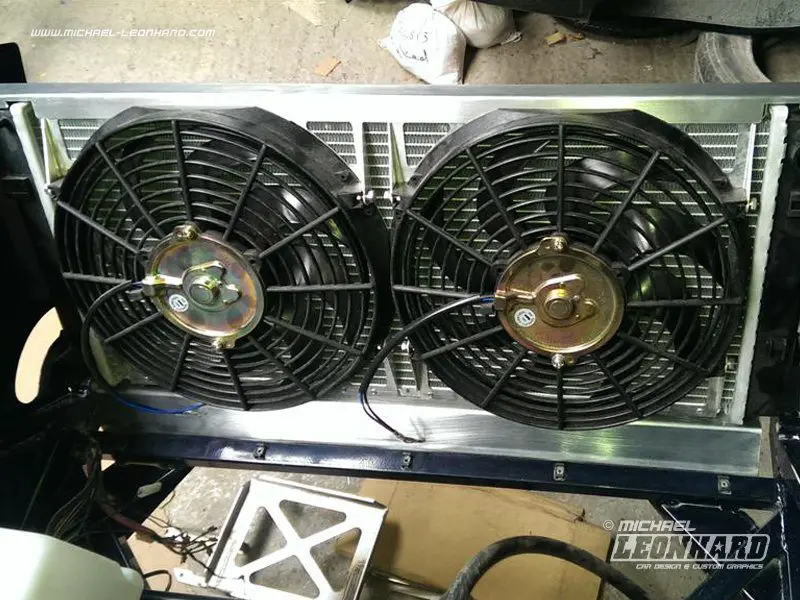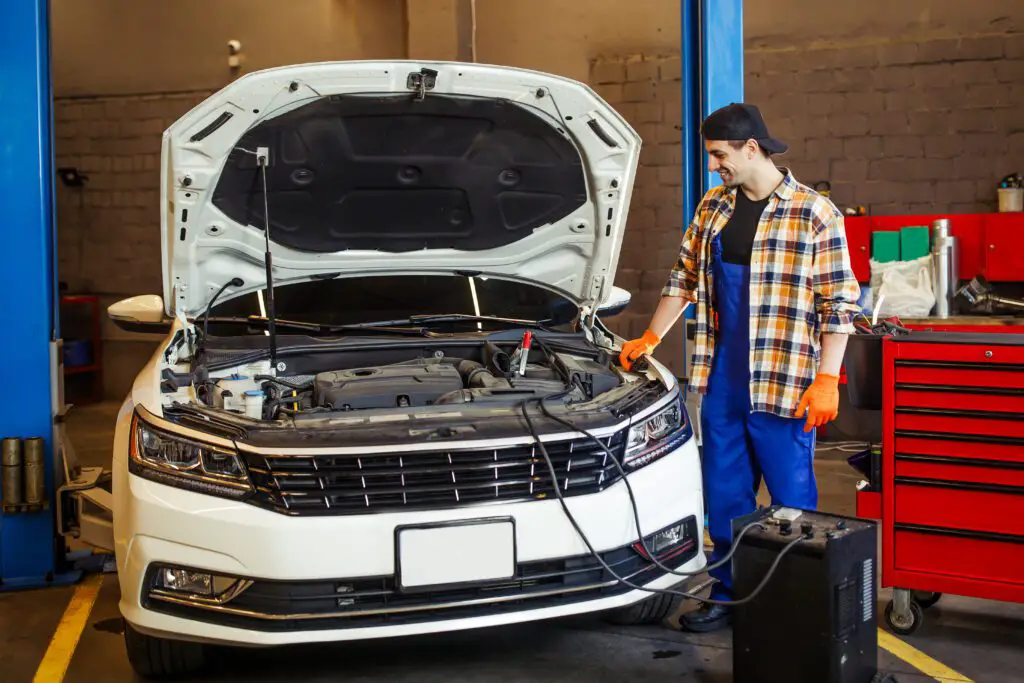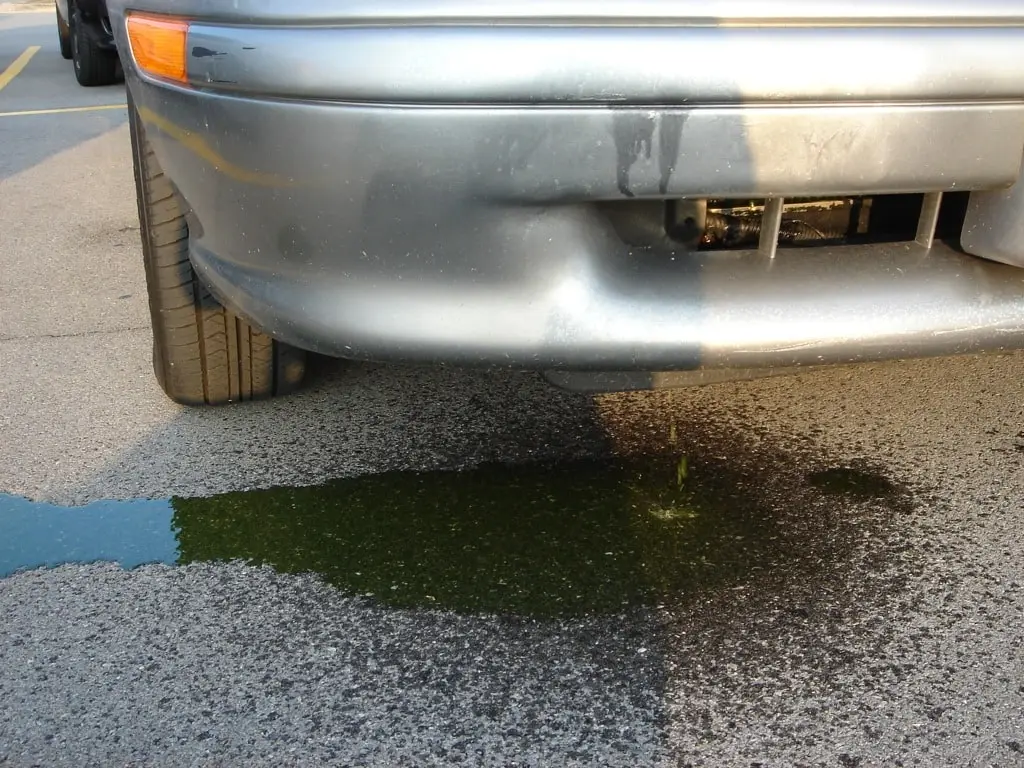A car’s radiator fan is a critical component of the engine cooling system. Its job is to pull air through the radiator to help cool the hot antifreeze/coolant that circulates through the engine. So what happens if your radiator fan stops working? Can I Drive My Car If The Radiator Fan Is Not Working? Let’s take a closer look.
How Does The Radiator Fan Work?
Before we get into whether or not you can drive with a faulty radiator fan, it helps to understand what the fan actually does.
The radiator fan is an electrically-powered fan located behind the radiator. It switches on when the engine coolant reaches a preset temperature – usually around 105°C.
As hot coolant passes through the radiator, the fan draws air across the radiator fins. This causes the hot coolant to lose heat to the cooler passing air. The now cooler coolant then circulates back through the engine to absorb more heat.
Can I Drive My Car If The Radiator Fan Is Not Working? Without a working radiator fan, the only airflow through the radiator is from forward motion. This is often insufficient to properly cool the engine.

Can I Still Drive My Car If The Fan Stops Working?
This depends on several factors:
Type of Fan
Some older cars have mechanically-driven fans connected to the engine via a belt. If this belt breaks, the fan stops working. As the fan is needed to start the engine, you won’t be driving anywhere.
However, most modern cars have electric radiator fans. If the electric fan stops working, you can still start and drive the car – at least for a short distance.
Airflow Through The Radiator
As mentioned, the radiator fan is there to enhance airflow through the radiator at low speeds. At highway speeds, there is normally enough airflow to sufficiently cool the engine even without the fan running.
Therefore, while not recommended, you could feasibly drive short distances at highway speeds with the radiator fan disabled. The problems begin when you slow down or stop in traffic.
Outside Air Temperature
If the outside air temperature is cool, this will help compensate for the lack of cooling fan airflow. You may be able to drive further without overheating issues.
However, on a hot day, especially in stop-start traffic, the engine will quickly overheat without the vital cooling assistance of the radiator fan.
Engine Temperature Gauge
Keep a very close eye on the engine temperature gauge. If it starts creeping towards the red zone, stop immediately and switch off the engine. Driving while the engine is overheating can cause catastrophic damage.
Symptoms Of A Radiator Fan Not Working
Can I Drive My Car If The Radiator Fan Is Not Working? Aside from the obvious lack of airflow from the cooling fan itself, here are some other signs that your radiator fan may not be working properly:
- Engine overheating when idle or driving at low speeds.
- Reduced cooling system efficiency – takes longer to warm up and cool down.
- Air conditioner weak or blowing warm air. The radiator fan is often used to cool the A/C condenser.
- Electric cooling fan not switching on when A/C is turned on.
- Engine temperature warning light comes on.
- Steam or coolant leaking from the radiator overflow tank.
- Electric fan making noise but not spinning.
Catching radiator fan problems early can help avoid extensive engine damage from overheating.
What Causes A Radiator Fan To Stop Working?
Before attempting to fix a faulty radiator fan yourself, it helps to understand what may have caused it to fail. Some common reasons include:
1. Faulty Fan Relay
The fan relay is an electronic switch that controls power to the radiator fan. A faulty relay can stop power reaching the fan motor.
2. Blown Fuse
Like any electrically-powered component, the cooling fan has a fuse. If this blows, the fan won’t turn on. Check the fuse box for any burnt out fuses.
3. Damaged Fan Wiring
Over time, the wiring to the fan motor can become damaged from heat cycling, vibration, and general wear and tear. Inspect the wiring for any loose, corroded or broken connectors.
4. Seized Fan Motor
Fan motors can seize up over time when bearings wear out. You may hear a buzzing or humming noise but the fan blades won’t spin. Replace the faulty fan motor.
5. Faulty Temperature Sensor
A faulty engine coolant temperature sensor can prevent the ECU from triggering the fan relay to switch on the fan when needed.
6. Blocked Radiator
A radiator blocked with debris won’t allow the fan to pull air through to provide cooling. The fan may run normally, but with reduced effect.
7. Broken Fan Blade
Physical damage from road debris can cause fan blades to crack or break. Visually inspect blades for damage.
Fixing A Faulty Radiator Fan
Can I Drive My Car If The Radiator Fan Is Not Working? Before attempting to repair the cooling fan yourself, make sure you disconnect the battery first. Fans may turn on unexpectedly when probed, and the wiring carries hazardous current.
Here are some steps you can take to get your radiator fan working again:
- Check all fuses related to the cooling fan and replace any that are burnt out.
- Inspect wiring condition and make sure connectors are clean, dry and secured properly. Replace any damaged wiring.
- Make sure the fan relay is turning on and sending power to the fan. Swap with a known good relay to test operation.
- Check the engine coolant temperature sensor and make sure it is functioning properly. Replace if faulty.
- Test the fan motor directly by applying 12V power to see if the fan spins. If not, the fan motor is bad and needs replacement.
- Check fan blades spin freely and are not jammed. Replace damaged fan blades.
- Make sure the radiator fins are clean and free of debris that would impede airflow.
- Consider adding an aftermarket transmission cooler to reduce strain on the stock radiator.

Can I Drive My Car If The Radiator Fan Is Not Working? If you are unsure about any of these steps, have your cooling fan inspected and repaired by a professional mechanic. The consequences of an overheating engine are not worth the risk.
Should I Keep Driving With A Faulty Radiator Fan?
It depends on your situation, but the risks generally outweigh the benefits of continuing to drive with a non-functioning radiator fan.
Even if you’re keeping engine speeds up on the highway, any unexpected traffic or delays could quickly lead to overheating issues. Not to mention, driving without proper engine cooling reduces the life of internal components.
Can I Drive My Car If The Radiator Fan Is Not Working? You should avoid driving with a faulty fan and have it repaired promptly. Only drive short distances if absolutely necessary, such as taking the car to the workshop. Keep a very close watch on engine temperatures and be prepared to stop immediately if the gauge rises.
FAQs – Can I Drive My Car If The Radiator Fan Is Not Working?
Can I drive with radiator fan not working?
It’s not recommended. You may be able to drive very short distances if the engine is already cool and outside temperatures are low. However, there is serious risk of overheating and engine damage if you attempt longer trips. Have the fan repaired before extended driving.
Can I drive a car without radiator fan?
No, all cars require a functioning radiator cooling fan for proper engine temperature regulation. The only exception would be driving for a few minutes in cold weather to take the vehicle to a repair shop. Any extended driving without a working radiator fan risks catastrophic engine damage from overheating.
Can I drive with one radiator fan?
Most cars have dual electric cooling fans for redundancy. If one fan stops working, you can temporarily drive using just the remaining fan. However, cooling capacity will be reduced, so monitor temperatures closely and avoid stop-start traffic on hot days. Have the faulty fan fixed promptly to restore normal cooling capabilities.
How far can I drive with broken radiator fan?
There is no fixed safe distance you can drive with a broken radiator fan. Engine overheating can occur quickly depending on outside temperatures and engine load conditions. As a general rule, you should only drive directly to a repair shop and keep speeds up to maintain airflow through the radiator. Avoid stop-start traffic or idling, which risks rapid overheating.
Does radiator fan affect AC?
Yes, the radiator fan plays a dual role – engine cooling and air conditioner condenser cooling. Without the fan, the AC system may eventually overheat and blow warm air even if refrigerant levels are okay. Get your faulty radiator fan repaired to ensure proper operation of both the engine cooling and AC systems.
Conclusion – Can I Drive My Car If The Radiator Fan Is Not Working?
Your car’s radiator cooling fan is a vital component that can’t be overlooked. While you may be able to limp home or to a repair shop without it working, there is substantial risk of overheating and severe engine damage if you attempt any extended driving.
Keep a close watch for signs of radiator fan failure and get any issues addressed promptly. Catching problems early on can help avoid expensive repairs down the road. With proper maintenance and care, your vehicle’s cooling system will provide many years and miles of reliable service.

